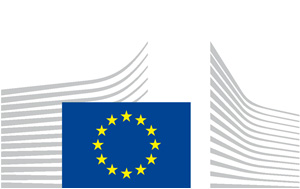|
The EU Cohesion policy provides for important investment possibilities to implement energy policy objectives in Poland which will be complemented by national public and private co-financing, aiming at optimal leverage. It also ensures integrated territorial solutions to challenges by supporting capacity building, technical assistance and territorial cooperation, including the Baltic Sea Region macro-regional strategy in which Poland takes part.
Internal energy market: Over 2014-2020, EU Cohesion Policy will invest some EUR 1 300 million in smart energy storage and transmission systems, as well as some EUR 100 million in smart electricity distribution grids in Poland. This funding will be complemented by national public and private co-financing, aiming at optimal leverage. These investments are expected to contribute to around 543 000 additional users connected to smart grids.
Energy efficiency: Over 2014-2020, EU Cohesion Policy will invest some EUR 3 290 million in energy efficiency improvements in public and residential buildings and in enterprises, as well as in high-efficiency cogeneration and district heating in Poland. A further estimated EUR 13 000 million will be invested in supporting the move towards an energy-efficient, decarbonised transport sector. These investments are expected to contribute to around 102 000 households with improved energy consumption classification and a decrease of around 1 181 502 000 kWh per year of decreased primary energy consumption of public buildings, as well as to around 10 km of new railway lines, 2 210 km of reconstructed or upgraded railway lines, 190 km of new or improved tram and metro lines, and 10 km of new or improved inland waterways.
Decarbonisation: Overall, the EU Cohesion Policy investments in Poland over 2014-2020 are expected to contribute to an estimated annual decrease of GHG of around 4 281 000 tonnes of CO2eq. Over 2014-2020, EU Cohesion Policy will invest some EUR 939 million in renewable energy in Poland. These investments are expected to contribute to around 960 MW of additional capacity of renewable energy production.
Research, Innovation and Competitiveness: Over 2014-2020, EU Cohesion Policy will invest significantly in R&I and in SME competitiveness in Poland. This will be based on one national strategy and 16 regional strategies for smart specialisation. For Poland, the national strategy includes a focus on the sustainable energy sector in three areas: highly-efficient, low-emission and integrated circuits of manufacturing, storage, transmission and distribution of energy; smart and energy efficient construction; and environmentally friendly transport solutions. Some of the regional smart specialisation strategies also identify similar priority areas (e.g. renewable energy, low-carbon economy, sustainable energy, advanced construction materials). At this stage, at least EUR 453 million is foreseen for investments in R&I and adoption of low-carbon technologies in Poland, but this might increase further in line with the evolving content of the smart specialisation strategy.
|
 EUROPEAN COMMISSION
EUROPEAN COMMISSION

























